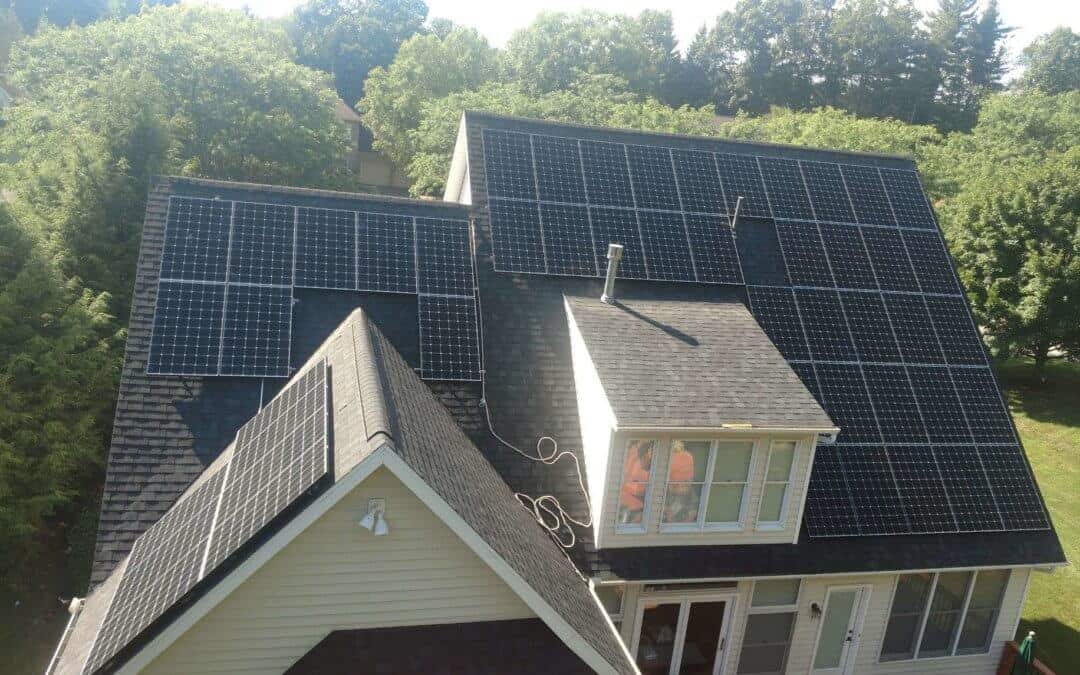An increasing number of homeowners are generating clean, affordable electricity with their own solar panels. A residential solar photovoltaic (PV) system is an excellent long-term investment with a high rate of return and reasonable payback period, but it can be nerve-racking to make that initial purchase. Fortunately, there are several actions that can be taken before purchasing a PV array that will maximize the system’s value.
How can optimum benefit be achieved? It boils down to a simple case of supply and demand: energy generated from a solar system constitutes the supply-side of the equation, and energy consumption is the demand. As in economics, the ideal is to have supply and demand reach an equilibrium. With a PV system, we want to minimize demand (energy consumption) so we can minimize the size of the array needed to supply an equivalent amount of energy.
When approaching energy optimization at home, it is best to adopt the “C.E.G.” method. C.E.G. stands for Conservation, Efficiency, and Generation. Combined, these strategies provide the most desirable outcome for any homeowner looking to save energy and money.
Conservation
Conservation is accomplished via behavioral changes, and requires no financial investment. Conserving energy doesn’t require a drastic lifestyle change; there are several areas where wasted energy can be reduced with little impact on quality of living.
Some examples include:
1. Turning off the faucet while brushing teeth
2. Turning out lights when leaving the room/ leaving the house
3. Lowering the thermostat by a couple of degrees in the winter (i.e. if its usually kept at 72, try dropping it down to 70)
4. Increasing the temperature by a couple of degrees in the summer (i.e. instead of 70 degrees, bump the thermostat up to 72)
These may seem like small savings, but they add up over time. This is by no means an exhaustive list, so there are plenty of other opportunities to save!
Efficiency
When a home is not operating at peak efficiency, energy and money are both being wasted. Several partial or whole-home energy efficiency retrofits can dramatically lower energy demand, including:
1. Increasing insulation in the walls, floors, and/or attic to prevent heat transfer between the conditioned interior and unconditioned exterior of the home
2. Replacing outdated water heaters with more efficient versions, such as a heat pump water heater
3. Improving, upgrading, or servicing the HVAC system
4. Air Sealing around doors, windows, and other joints
5. Replacing Incandescent lightbulbs with LEDs
6. Installing ENERGY STAR Certified appliances in place of outdated, inefficient equipment
7. Replacing old, single-paned windows with double-paned, glazed windows
The magnitude of savings from each of these strategies varies by home. Investing in an energy audit from a qualified professional is an excellent starting point for increasing efficiency at home. Envinity offers comprehensive whole-home energy audits conducted by a BPI Certified Auditor. A home energy audit identifies issues related to energy costs, comfort, moisture, and air quality.
*Thanks to a rebate from First Energy, homeowners in Central PA also receive $200 worth of energy efficiency improvements the day of the audit (in the form of LED lightbulbs, aerators, and low flow showerheads)! Home energy savings begin the day of the audit.
Generation
Energy generation is best addressed after energy demand in the home has been minimized. The design of a solar array is site-specific and dependent on several factors including orientation, shading, roof or ground space, and annual energy usage. It also depends on the objective of the homeowner: is the goal to partially or completely offset electricity consumption? Should the system account for an addition that will be added in the near future? These are some of the many considerations that impact the solar design process.
Optimizing a home to function as efficiently as possible will yield the highest system value, as each kWh is being used to complete useful work rather than being unnecessarily wasted. Once installed, a solar system will begin generating electricity, and (assuming it is grid-connected) will earn money for any surplus generation. A PV system investment will generally be recouped within 10-15 years, and subsequently will earn a profit.
The C.E.G. method is an effective approach for the homeowner who wants to glean the maximum benefit from every kWh used. Changing behavior is a great place to start saving without any upfront cost. Smaller projects like replacing incandescent bulbs with LEDs also save money, and generally pay themselves back within a couple of years, though more whole-home projects will generally save more in the long term.
If you are interested in learning more about energy conservation, please see the resources provided below. If you would like to learn more about increasing the efficiency of your home and/or adding a solar array, please see the links below or contact Envinity at 814.231.3927.
Happy energy savings!
Resources:
Conserving Energy at Home
–ENERGY STAR-Save Energy At Home
–U.S. Department of Energy-Energy Saver
–U.S. DOE-Spring and Summer Energy Saving Tips
Energy Efficiency at Home
Going Solar
–What are the benefits of installing residential solar?


Recent Comments